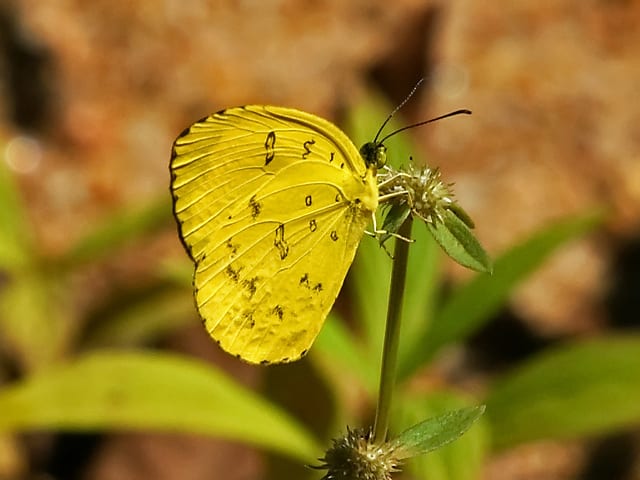Welcome to Star Wars week here at the Athens Science Observer. To help celebrate May the 4th – Star Wars Day – we wanted to take a look at the real life science of that galaxy far far away.
“Midi-chlorians.â€
For many Star Wars fans, this word alone can set off rage-induced rants.
The Prequel trilogy – a set of three Star Wars movies released 20 years after the conclusion of the original Star Wars trilogy – is easy to hate because it stomped all over cherished memories of Han Solo and Luke Skywalker with lazy storytelling, wooden dialogue, and awful pacing. But the one thing disgruntled Star Wars fans love to hate over everything else are midi-chlorians. If you don’t remember (or are actively trying to forget), Jedi master Qui-Gon Jinn infamously explains that midi-chlorians are tiny bacteria that live inside all cells and grant their host access to the Force. Yes, the mystical living Force that binds all life and grants incredible powers is attributed to a bacterial infection with a dumb name.
But while midi-chlorians might be a terrible, terrible storytelling decision, the actual concept is not as absurd as you think. Endosymbiotic organisms are single celled organisms that live inside the cells of host, rather than somewhere on the surface, like skin. They are actually fairly common – many familiar disease causing organisms are also endosymbiotic in at least part of their life cycle.
But midi-chlorians don't cause disease – they are a pervasive infection that affects all life across an entire galaxy (far, far away).
But midi-chlorians don't cause disease – they are a pervasive infection that affects all life across an entire galaxy (far, far away). The closest thing we have here on Earth is the bacteria Wolbachia. An estimated 1,000,000 species of insects and closely related bugs like spiders have wolbachia lurking inside their cells. In some of these species, every single individual is infected with wolbachia. Wolbachia generally lives its entire life inside of a single organism, which means the only way that a wolbachia infection can spread is by a female bug laying eggs that carry wolbachia cells inside them.
And since males can't pass on their infections, wolbachia have evolved a variety of ways to increase the number of female offspring their hosts produce. In black flour beetles, a female infected with wolbachia only has daughters – all of her sons are killed early in development to prevent them from competing with their sisters for resources. In many different species of fruit flies and mosquitoes, a male who carries wolbachia can't successfully breed with a female who does not – the majority of their offspring die.
In other species, wolbachia infection has a much more drastic effect on reproduction. A female common grass yellow butterfly infected with wolbachia might have all female offspring, but not because the males are being killed – instead the wolbachia in their cells makes them develop as females, even though they carry the genes to make them develop as males. And in tiny parasitoid wasps, wolbachia infection makes females reproduce without male input at all – they just produce all daughters who are exact clones of their mother.
Perhaps midi-chlorian triggered clonal reproduction is what happened in the case of Anakin Skywalker, a boy absurdly strong in the Force and apparently born without a father. Of course, in that case Anakin ought to be girl, so maybe not.

But clumsy Christ metaphors aside, carrying midi-chlorians or wolbachia can have pretty dramatic consequences for the host. The example species listed above are just a small fraction of what wolbachia infects. In addition to reproductive changes, wolbachia frequently transfers genes into the host's genome. And in one wasp species with wolbachia-induced clonality, reproduction can no longer occur at all without the wolbachia infection. They need the wolbachia to survive, much like how Qui-Gon describes the relationship between living things and midi-chlorians.
So while an infection with these endosymbiotic bacteria doesn’t let fruit flies see into the future or move objects with the power of their minds, wolbachia can change their evolutionary destiny.
About the Author
 Katie Pieper is a PhD student in the Department of Genetics at the UGA. She studies the molecular evolution of sex chromosomes in fruit flies. In her free time, she enjoys baking delicious desserts and winning at trivia contests. She is also the head tweeter for the Athens Science Café official Twitter account @AthSciCafe. Get in touch with Katie at @kpeeps111 or kpieper@uga.edu. More from Katie Pieper. Katie Pieper is a PhD student in the Department of Genetics at the UGA. She studies the molecular evolution of sex chromosomes in fruit flies. In her free time, she enjoys baking delicious desserts and winning at trivia contests. She is also the head tweeter for the Athens Science Café official Twitter account @AthSciCafe. Get in touch with Katie at @kpeeps111 or kpieper@uga.edu. More from Katie Pieper. |
About the Author
-
athenssciencecafehttps://athensscienceobserver.com/author/athenssciencecafe/April 17, 2020
-
athenssciencecafehttps://athensscienceobserver.com/author/athenssciencecafe/April 12, 2020
-
athenssciencecafehttps://athensscienceobserver.com/author/athenssciencecafe/April 3, 2020
-
athenssciencecafehttps://athensscienceobserver.com/author/athenssciencecafe/March 30, 2020







